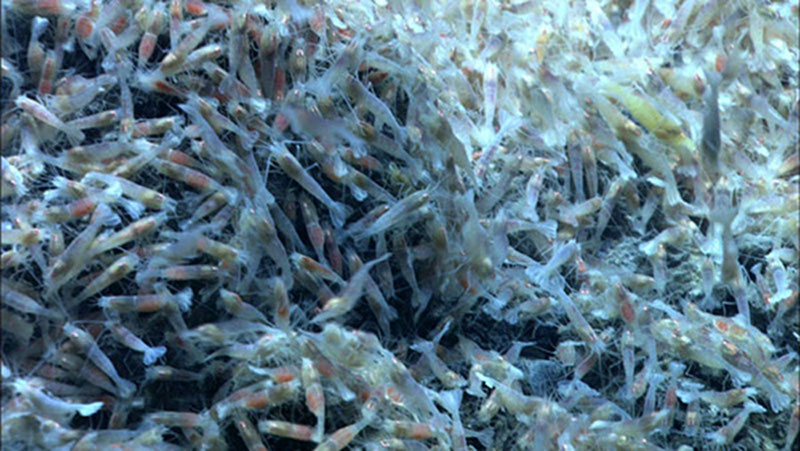
Dense concentrations of shrimp, many of which were gravid (egg bearing) at West Mata. Image courtesy of MARUM, University of Bremen and NOAA-Pacific Marine Environmental Laboratory. Download larger version (jpg, 1.4 MB).

Dense concentrations of shrimp, many of which were gravid (egg bearing) at West Mata. Image courtesy of MARUM, University of Bremen and NOAA-Pacific Marine Environmental Laboratory. Download larger version (jpg, 1.4 MB).
Today, we returned to West Mata, the volcano that exploded violently in 2009, enabling scientists to witness, for the first time, lava actively spewing from sources deep within the Earth. Pillow lava tubes and angular lava rocks were seen along the steep, unstable summit slope. Large vertical dikes were also seen nested within the summit wall. The collapse of the southeast side of the summit, which scientists expect is the “major event” known to take place here in the past year and a half and are hopeful is recorded on the hydrophone recovered two days ago, produced a large pit crater on the summit. The once very focused volcanism witnessed here in 2009 has been replaced by diffuse flow of hydrothermal fluid, evidenced by the types of organisms observed here now. Later in the dive, the ROV came upon extremely dense concentrations of shrimp – perhaps some of the most dense concentration of shrimp observed at a hydrothermal vent site exhibiting diffuse flow such as that found at West Mata today. Many of the shrimp were gravid (egg bearing). Where did they come from? How did they get here? How long have they been here? Biological, geological, water and chemical samples were collected to help us answer some of these – and many other - questions.